Grace Apperley, Hilary Armstrong, Kate Ashworth, Shyla Chhika, Nina Cole, Samuel Dunstall – Ngāti Tūwharetoa, Hannah Fahey-Quine, Briar Grounds, Celia Hamling, Amba Hancock, Lottie Harper-Siolo – Ngāti Hāmoa, Kate Healy, Rhiannon Higgs, Aidan Johnson, Kate Jowsey, Sabina Lacson, Mollie Nicol, Holly Patchett, Tegan Pirimona, Marie Preuss, Kezia Redman, Annie Sansom, Maddy Thompson, Libby Tonkin, Nhi Tu, Keeley Waller
The Stories in the Land
Credits
-
Tauira / Students
Grace Apperley, Hilary Armstrong, Kate Ashworth, Shyla Chhika, Nina Cole, Samuel Dunstall – Ngāti Tūwharetoa, Hannah Fahey-Quine, Briar Grounds, Celia Hamling, Amba Hancock, Lottie Harper-Siolo – Ngāti Hāmoa, Kate Healy, Rhiannon Higgs, Aidan Johnson, Kate Jowsey, Sabina Lacson, Mollie Nicol, Holly Patchett, Tegan Pirimona, Marie Preuss, Kezia Redman, Annie Sansom, Maddy Thompson, Libby Tonkin, Nhi Tu, Keeley Waller -
Kaitautoko / Contributors
Kaimahi Kura Puke – Te Āti Awa / Taranaki Nui Tonu, Kaiāwhina Georgina Stokes – Ngāi Tahu -
Kaiako / Lecturers
Jen Archer-Martin – Ngāpuhi, Stuart Foster
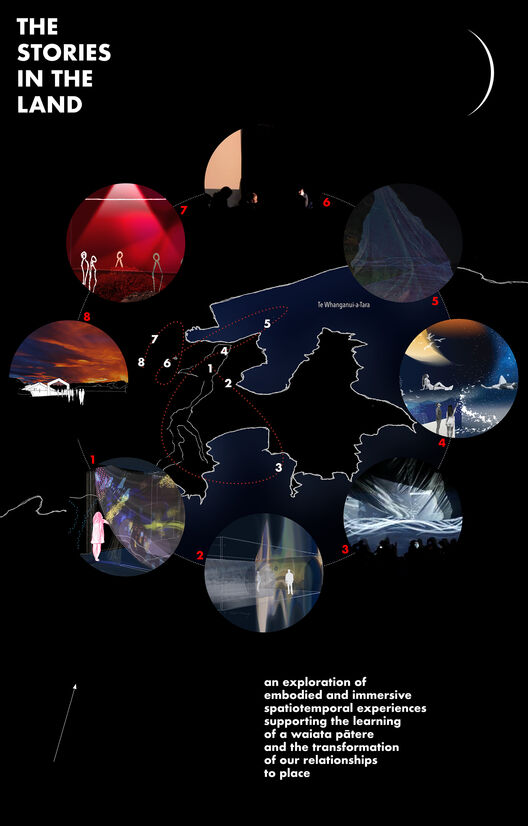

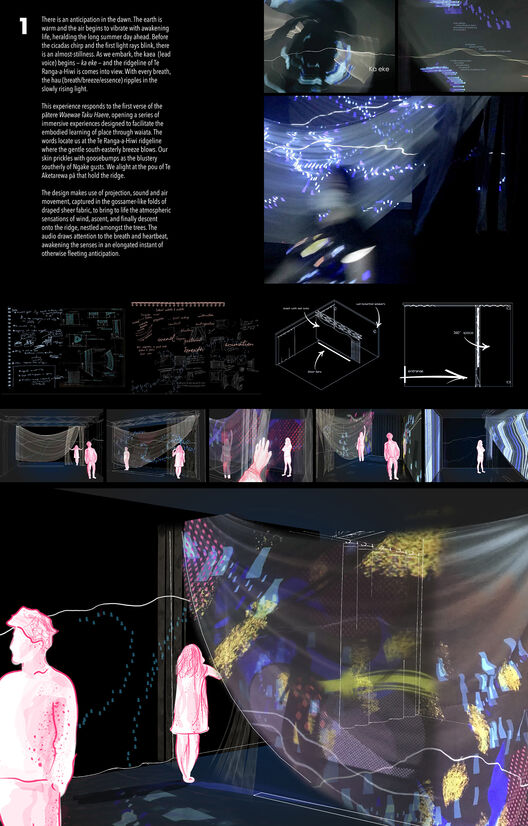
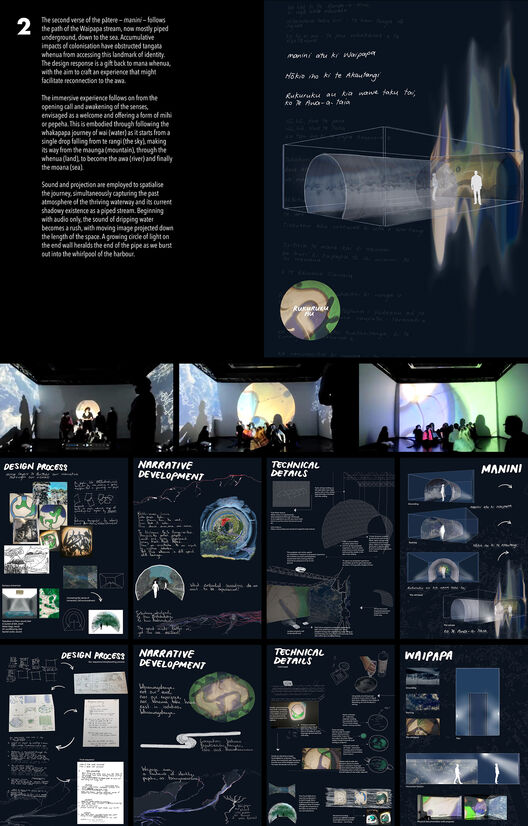

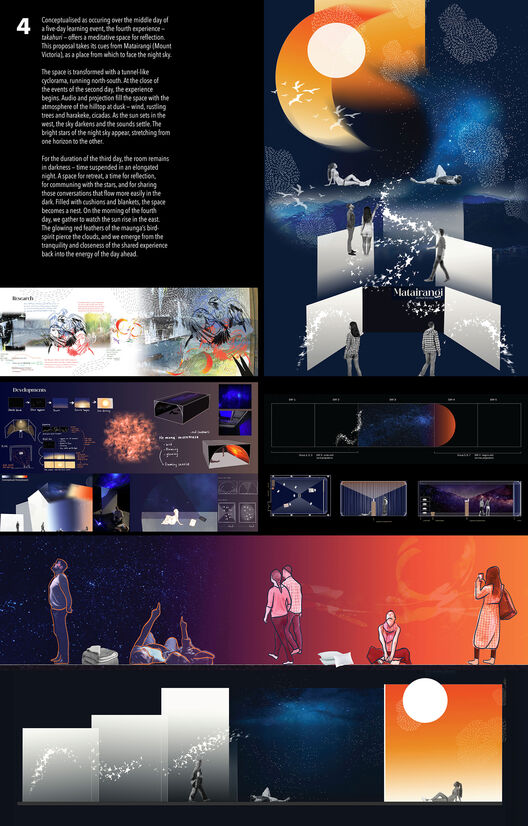

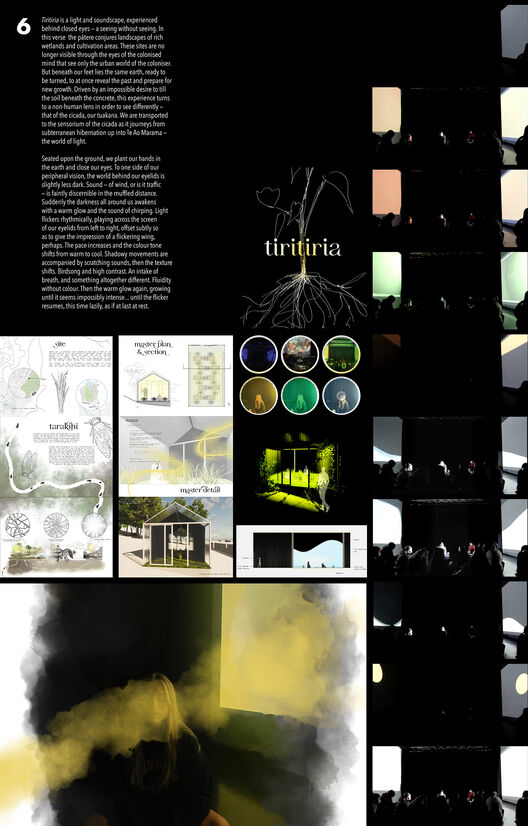


Description:
“To be a mokopuna of an iwi or hapū was to know the stories in the land [...] part of an archive of belonging that was never far away“ (Moana Jackson, ‘Where to next? Decolonisation and the stories in the land,’ in Imagining Decolonisation, 2020, 59).
The Stories in the Land was a collaborative studio project undertaken in February-March 2022. Amidst the uncertainty of the Omicron outbreak, we aimed to provide an experience of grounding and belonging. An opportunity arose to tautoko (respond in support of) the new waiata pātere (chant) gifted to Te Rau Karamu marae. Written by Te Āti Awa/Taranaki Whānui kaumatua Kura Moeahu, with a rangi by Ngataiharuru Taepa, Waewae Taku Haere follows the flight path of a bird as it circles around significant sites in the local landscape, breathing life into the stories in the land through the reciting of place names.
Learning an eight-verse pātere can be daunting, particularly for those who do not speak Te Reo Māori. The project looked to tautoko the efforts of teachers of the waiata, and their learners, by employing spatial design fundamentals of embodied, multisensory experience. Through designing a series of immersive spatiotemporal experiences, students explored how to facilitate meaningful and transformative learning, encourage embodied engagement with stories of place, and enhance mutual wellbeing.
The tikanga (protocols) for the project introduced students to working in a kaupapa Māori space. We were guided by a resident Te Āti Awa creative expert, with the tautoko of Kura Moeahu. The first session opened with a karakia and kōrero at the Parihaka Memorial on Pukeahu where students learned the history of the site, before being introduced to the pātere itself. Opening and closing karakia were learned to use for each session, as we were dealing with taonga – the pātere and the mātauranga (knowledge) contained within.
Seven groups formed around shared emotive connections to land, water and the elements. Each group was given a verse to respond to, with the final verse a collective coming-together. While the groups worked autonomously, there were regular moments for collective and collaborative experiences. These began with a hīkoi (walk) along the ‘spine’ of the journey - Ranga-a-hiwi ridge. Here, following karakia and kōrero, each group performed a brief mihi (greeting) to the sites of their verse, and shared initial embodied research.
As time progressed, seven immersive experiences developed, each with its own distinct atmosphere. These were tested and installed in a ‘space lab’ set up for projection on three walls, although some groups also proposed hīkoi to the sites themselves. The project culminated in a half-day event of experiences, presentations, and a set of booklets gifted to the Te Āti Awa creative expert. Following each experience, the verse was sung as tautoko, threading the pātere together as a whole across the morning. The result was an astounding and moving journey, through which we were at once transported, grounded, and connected.